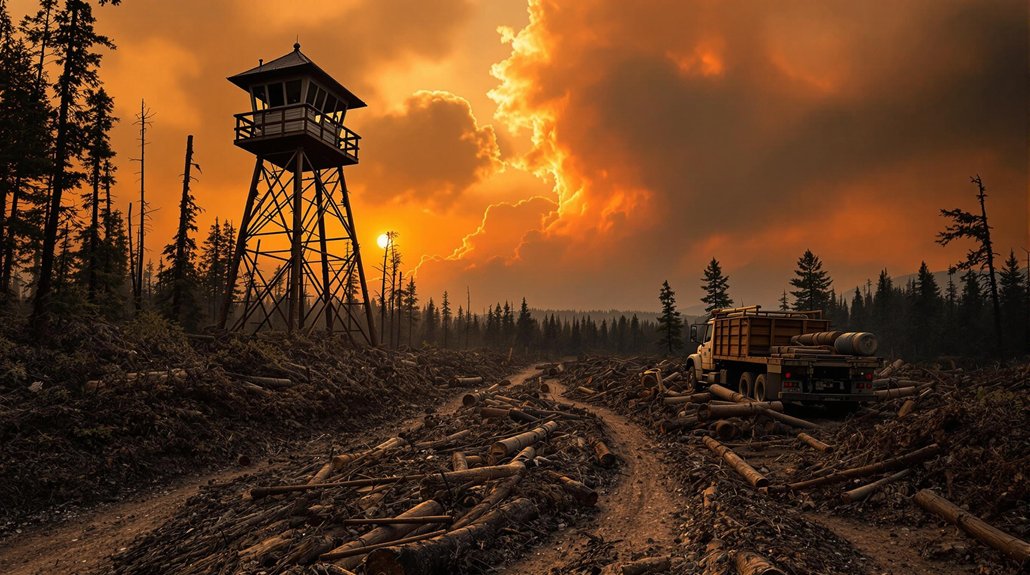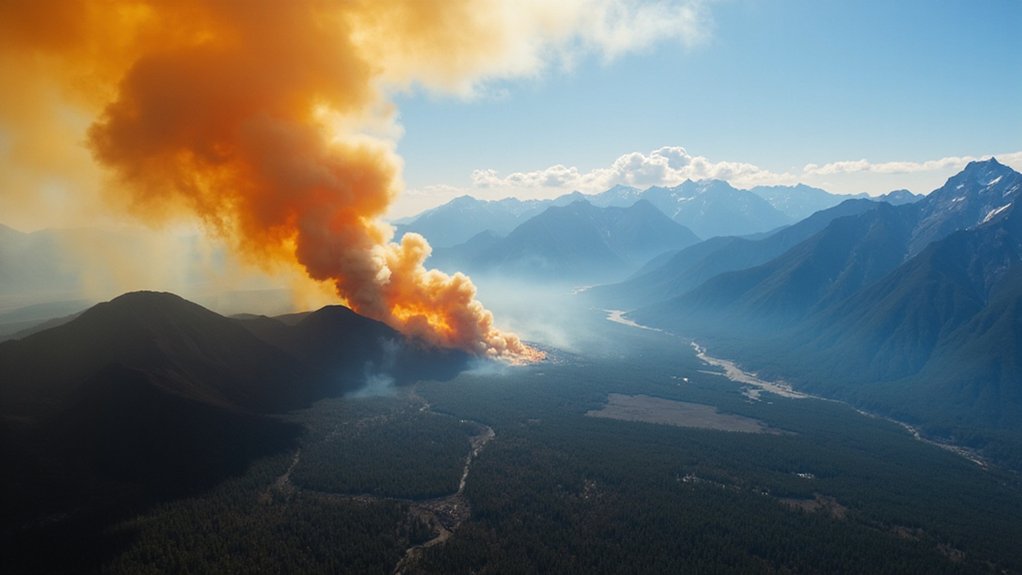Two hundred fires. That’s what’s burning across Canada right now, and it’s not even summer yet. The 2025 wildfire season kicked off with all the subtlety of a sledgehammer, mirroring 2023’s catastrophic start. Already, 2.2 million hectares have gone up in smoke – seven times the ten-year average for this time of year. Let that sink in.
Canada’s 2025 wildfire season: 200 fires, 2.2 million hectares burned before summer even arrives.
The fires are everywhere. Alberta, Saskatchewan, Manitoba, Ontario, Quebec – pick a province, find a flame. Saskatchewan and Manitoba are particularly scorched, sitting at the highest preparedness levels while battling massive blazes. The Ingolf/Whiteshell Provincial Park fire and the Bird River fire aren’t just names on a map. They’re forcing families from their homes, turning communities into ghost towns.
Half these fires? Completely out of control. Emergency crews are stretched thin, with hundreds of personnel fighting flames that seem to multiply faster than bad news on social media. Whiteshell Provincial Park is closed, mandatory evacuations are in effect, and the Wabaseemong community and Bird River residents have fled their homes.
Air support buzzes overhead like mechanical dragonflies, dropping water on fires that laugh at their efforts. The Peace River Forest Area in Alberta is watching PWF-031-2025 consume 2,259 hectares while crews struggle to contain the blaze. Aircraft mobilization has reached 1125.2 units, far exceeding the typical deployment levels.
The culprit behind this mess isn’t exactly a mystery. Climate change has rolled out the red carpet for wildfires, serving up hot, dry conditions on a silver platter. A warm spring didn’t help matters. Weather forecasts promise more of the same – because apparently, Mother Nature hasn’t tortured us enough yet.
Many fires in Manitoba started from human activity, but climate conditions turned small mistakes into massive disasters.
The Canadian Interagency Forest Fire Centre is monitoring the situation, coordinating responses, setting up evacuation centers. They’re doing their best, but when you’re facing the second-worst wildfire start in recent years, “best” feels inadequate.
Air quality alerts blanket affected provinces as smoke transforms blue skies into apocalyptic gray. For remote Indigenous communities, these wildfires represent another layer of hardship on top of existing challenges with geographic isolation and limited access to emergency services.
This is Canada’s new normal. Early starts, massive burn areas, overwhelmed response teams. The 2025 season isn’t breaking records – it’s obliterating them. And summer hasn’t even arrived.
References
- https://cwfis.cfs.nrcan.gc.ca/report
- https://cwfis.cfs.nrcan.gc.ca/report/graphs
- https://www.washingtontimes.com/news/2025/jun/4/data-capturing-hot-spots-burned-acres-show-canada-wildfire-season/
- https://climateinstitute.ca/news/fact-sheet-wildfires/
- https://nationalpost.com/news/world/canada-2025-wildfire-spring-season








